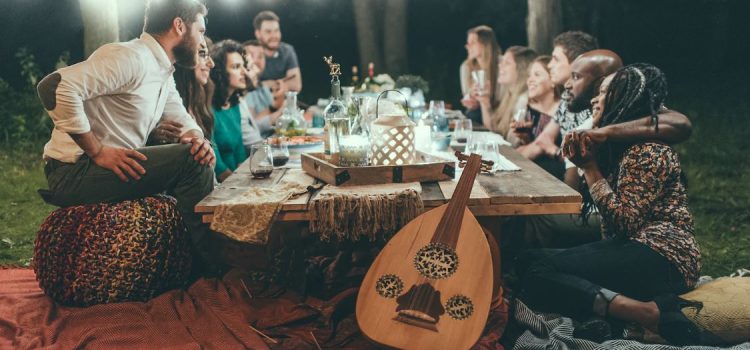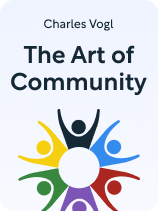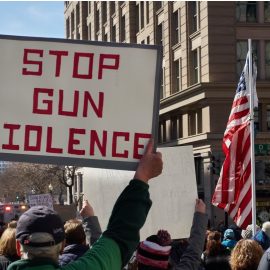

This article is an excerpt from the Shortform book guide to "The Art of Community" by Charles Vogl. Shortform has the world's best summaries and analyses of books you should be reading.
Like this article? Sign up for a free trial here.
Why are community meetings necessary? How can you find a meeting place that will suit your community’s needs?
In The Art of Community, Charles Vogl explains that every community needs a meeting place. This is where members can come together, enjoy each other’s company, and help each other pursue goals based on their shared moral code.
Check out the factors that go into making a community meeting special.
Choosing a Suitable Meeting Place
A community meeting place can be a traditional structure or a makeshift hangout spot. A large community may have more than one meeting place. For example, think of the global community of yoga practitioners: There are a number of traditional studios where practitioners can meet, and a small, informal group of practitioners might create a temporary meeting place by devoting one member’s living room to a yoga session. A meeting place can even be online (like a social media group for yoga practitioners).
The physical characteristics of a meeting place impact the emotional resonance of any gathering. For example, it might be more meaningful to hold a family reunion in a relative’s home that’s full of family memorabilia than in a restaurant no one has any emotional attachment to. For online communities, this doesn’t typically apply—but Vogl recommends holding offline meetings every so often to enhance members’ connections with one another.
Vogl says that if you want to make a temporary meeting place special, you should consider six factors:
1) Who will occupy the space? Vogl explains that a meeting place is made special when the right people are in attendance, so you should specifically request their presence there. For example, you might send out paper invitations for a special event at your meeting place.
2) What attire will people wear in the space? Vogl says that when people wear distinctive kinds of clothing, it marks a place and occasion as unique in some way. For example, sports fans often wear apparel representing their favorite teams when they gather for games.
3) How can meaningful elements be elevated in the space? Vogl says that to draw attention to meaningful elements (like guests of honor), you may want to physically elevate them. For example, in the US, newlyweds sometimes sit at a table upon a raised platform at their wedding receptions.
4) How does sound work in the space? Vogl explains that many communities use silence, music, or speech to create meaningful moments, so you want to ensure that the space can accommodate your sound-related needs.
5) How is the space lit? According to Vogl, if you want to draw attention to something, you should ensure that it’s well-lit, while keeping less important aspects of the environment relatively darker.
6) How is the space contained? Vogl says that to ensure a meeting place is special, it should be separated from the ordinary world by a physical marker. For example, some Wiccans use salt, candles, and other items to temporarily create a magic circle dividing their sacred space from the secular world.
| What Other Experts Say About Community Meeting Places Whether you’re choosing an already-existing meeting place for your community or creating a temporary one, experts agree that the physical aspects of that meeting place have great bearing on your gathering’s success. In The Art of Gathering, Priya Parker says that if you’re choosing a meeting place (as opposed to creating one), you should take two factors into consideration: First, the meeting place should remind your community of why it’s coming together. Second, it should encourage desired—even unexpected—behavior. For example, if you’re part of a wilderness society, you might consider meeting in nature rather than in a conference room. Being surrounded by nature would more easily bring to mind members’ shared values, give them opportunities to interact with nature, and perhaps give them renewed zeal for their cause. Another factor to consider when choosing or creating a meeting place for your community is accessibility—whether it’s practical, usable, and easily reached by all members and prospective members. For example, you may want to choose a meeting place that people who use wheelchairs or other mobility aids can easily get to. If your community meets online, you may want to choose a video conferencing service that provides real-time captioning for members who are deaf or hard of hearing. If you don’t choose an accessible meeting space, you risk accidentally excluding valuable members from participating in community gatherings. Experts also note that environmental factors can have a significant effect on your mental state, so it’s important to choose or create a meeting space that will make members feel comfortable enough to participate fully. For example, if you’re choosing a meeting place for your startup, you might consider an office that gets a lot of natural light, as studies have shown that natural light boosts workers’ moods and productivity. You might also consider what color the walls are—studies suggest that cool colors produce a sense of calm, while warm colors produce a sense of urgency—and whether that color will help your community achieve its goals. According to Vogl, there are a few other factors that can impact your community’s experience of its meeting place. First, he says your community should wear special clothing in its meeting place because this makes the space itself seem more special. Experts note there’s another reason to don special attire—your clothes communicate facets of your identity, and coordinating your outfits can enhance your sense of shared identity. For example, whether Christians dress formally or casually for church services can indicate some of their spiritual beliefs, like their views on modesty or reverence for God. Vogl also says that you should physically elevate meaningful elements in your meeting place to draw attention to them—but interior design experts note that elevation isn’t the only way to highlight elements. For example, you can arrange furniture so that when community members sit down, they naturally look in the direction of your chosen features. Another option is to paint an accent wall (a wall that’s a different color than other walls) behind meaningful elements, since contrast naturally draws your visual attention. A final consideration when it comes to community meeting spaces is privacy. If your community is discussing sensitive matters (as mental health support groups would, for example), privacy is key. For this reason, you might choose or create a meeting space that allows for soundproofing or other barriers to eavesdropping. If your meeting place isn’t sufficiently private, you can use white noise machines to help mask your conversations. In online communities, security features like access codes and waiting rooms can help you ensure your community’s privacy. |

———End of Preview———
Like what you just read? Read the rest of the world's best book summary and analysis of Charles Vogl's "The Art of Community" at Shortform.
Here's what you'll find in our full The Art of Community summary:
- The fundamental guidelines all communities should follow
- How to institute a community meeting place and set of customs
- How you can enhance belonging within your community






